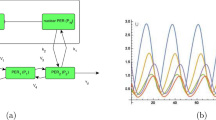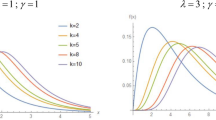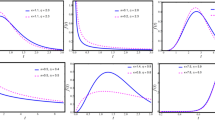Abstract
PROF. FREMLIN'S criticism is based primarily on the inability of the equation, Y = exp (−kt−c), to describe adequately natural processes that do not have apparent sigmoidal time-course curves. Of the three hypothetical situations presented, I agree that the first would describe a typical sigmoid curve which can be generated by the basic equation. The time-course of the type of process outlined in the second case would resemble a frequency distribution function, a curve which is generated by the first derivative of the equation1. My colleagues and I have suggested that the equation may represent a new type of distribution function2. The similarities between the parameters of the equation and those of the Weibull distribution function3 have been noted4.
This is a preview of subscription content, access via your institution
Access options
Subscribe to this journal
Receive 51 print issues and online access
$199.00 per year
only $3.90 per issue
Buy this article
- Purchase on SpringerLink
- Instant access to full article PDF
Prices may be subject to local taxes which are calculated during checkout
Similar content being viewed by others
References
McCormick, N. G., J. Bact., 89, 1180 (1965).
Vary, J. C., and McCormick, N. G., Spores, 3, 188 (Amer. Soc. Microbiol., 1965).
Weibull, W., J. App. Mech., 18, 293 (1951).
Vary, J. C., and Halvorson, H. O., J. Bact., 89, 1340 (1965).
McCormick, N. G., Nature, 208, 334 (1965).
Author information
Authors and Affiliations
Rights and permissions
About this article
Cite this article
MCCORMICK, N. Nature's Time-scale. Nature 211, 1108 (1966). https://doi.org/10.1038/2111108a0
Issue date:
DOI: https://doi.org/10.1038/2111108a0
This article is cited by
-
Nature's Time-scale: Degenerative Disease in Man
Nature (1967)



